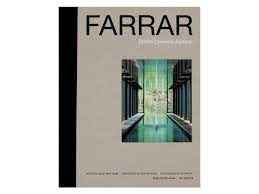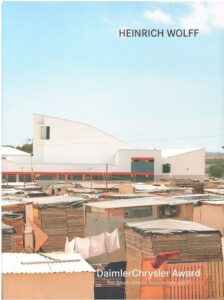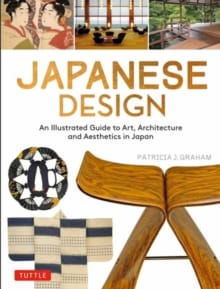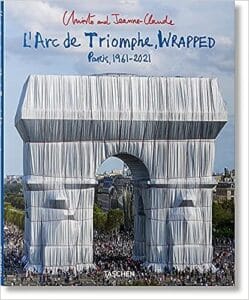Showing 1–16 of 76 results
-
 Out of stock
Out of stock
R340The book focuses on the Big Five of African cities: Cairo, Lagos, Nairobi, Kinshasa and Johannesburg, and brings together positions of artistic and cultural studies, as well as detailed histories and the specific dynamics of these African cities, in order to expand our understanding of the concept of urbanity and the phenomenon of the City from an African perspective. This is the first time the book is available in English.
-

R200How do young African professionals imagine a future for the continent’s cities? Building African Futures presents ten essays by young architects, urban planners and activists that offer innovative solutions to big challenges, including housing shortages, informality, legal roadblocks and misunderstandings between architects, policy-makers and local people. Their ideas are grounded yet transformative.
-

R550Softcover book. 256 pages.
-

R285Hardcover book – 111 pages. Drawings, photos and text.
-

R250This special publication is devoted to the prizewinner, Heinrich Wolff, selected by an international jury from a presentation by the nominees in February 2007 in Pretoria.
-

R450The book, published by Local Studio and Dave Southwood, documents the first twelve buildings designed and built by the Johannesburg-based architecture firm, founded by Thomas Chapman in 2012. Co-authored by Chapman and photographer David Southwood, with Illustrations by Michael Tymbios, Hustles takes the reader not only into the buildings themselves, but also gives a detailed account of the often chaotic context of Johannesburg in which the buildings exist.
-

R340Patricia Graham helps guide readers through the aspects of Japanese art and design we’ve all come to appreciate-whether it’s a silk kimono, carefully raked garden path or modern snack food packaging. From the ten key characteristics of Japanese design to the Shinto and Buddhist influences on its aesthetics, this book serves as a great resource for the different styles and how they developed. Another fascinating and less explored piece of design in Japan is its influence on and interpretation by Westerners.
-

R625Like most of Christo and Jeanne-Claude’s work, L’Arc de Triomphe, Wrapped is temporary and runs for 16 days from Saturday, September 18 to Sunday, October 3, 2021. Carried out in close collaboration with the Centre des Monuments Nationaux, the historic structure is wrapped in recyclable polypropylene fabric in silvery blue and recyclable red rope. The project is the posthumous realisation of a long-held dream for Christo and Jeanne-Claude, who first drew up plans to wrap the Arc de Triomphe in 1961 while renting a small room near the monument.
-

R375Hardcover book – 191 pages.
-

R150Paperback book – 71 pages. Text and photographs.
-

R600Published in conjunction with a major exhibition at the Smithsonian’s Cooper-Hewitt, National Design Museum, Piranesi as Designer explores the far-reaching impact of Piranesi’s modernist style on three centuries of architecture and design. 144 pages nearly 200 integrated color photographs.
-

R250Softcover book. 232 pages.
-

-

R640This monograph surveys thirty of the most iconic buildings designed by Skidmore, Owings & Merrill (SOM), the legendary American architecture firm, since its founding in 1936.
-

R1200Internationally renowned, Peter Rich’s career represents a lifelong attempt to find a contemporary, yet uniquely African mode of design. This book follows the chronology of his work which emerges from a fascination with African tribal settlements, including his documentation, publication, and exhibition of Ndebele art and architecture, and his friendship with sculptor Jackson Hlungwani.
-

R200This new book, the first comprehensive publication on the significant site, tells the story of the gas works and the manufacture of gas in Johannesburg, beginning in 1927.
















